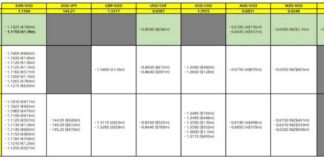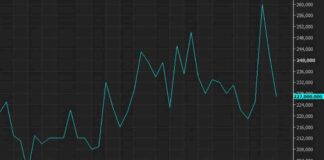Sunset Market Analysis: Key Insights on Forex Trends
As the sun sets on the trading day, the global markets have been buzzing with activity, driven by a range of economic developments and policy decisions. From Europe to the United States, investors have been closely monitoring the latest trends in Forex markets for actionable insights. Here’s a breakdown of the key highlights shaping today’s market landscape:
European Markets React to China’s Policy Moves
European trading today was largely influenced by China’s Politburo’s announcement of more forceful cuts, increased fiscal spending, and efforts to stabilize the real estate market. These developments sparked a surge in stock markets, particularly in China, with the CSI300 index recording a remarkable jump of over 4%. This surge is on track to deliver the biggest weekly gain in a decade for the index.
The positive momentum from China spilled over to European markets, with indices like the EuroStoxx50 and Stoxx600 posting gains of over 2%. The Australian dollar (AUD) and New Zealand dollar (NZD) emerged as the top performers in currency markets, reflecting the strong trade ties between these countries and China. In the bond markets, German Bunds outperformed, with German yields testing recent lows.
US Treasuries React to Economic Data
In the United States, Treasury markets saw some fluctuations following the release of key economic data. Durable goods orders exceeded expectations, with both headline and core gauges showing positive growth. Additionally, weekly jobless claims dropped to their lowest level since May, defying projections for an increase.
US Treasury yields initially saw gains but later traded flat as investors awaited Federal Reserve Chair Powell’s speech at the US Treasury Market Conference. However, Powell’s remarks did not touch on monetary policy or economic outlook, leaving markets to digest the existing data.
SNB Cuts Rates as Swiss Inflation Declines
The Swiss National Bank (SNB) made its third consecutive rate cut, lowering the policy rate by 25 basis points to 1.0%. The decision was driven by decreased inflationary pressures, particularly due to imported goods and services and the recent appreciation of the Swiss franc. The SNB revised its inflation forecast downwards for the coming years, citing factors like the strong Swiss franc and lower oil prices.
The SNB remains proactive in the foreign exchange market, with incoming president Martin Schlegel indicating that the current rate level provides room for further action. While the Swiss franc strengthened slightly against the euro, ongoing challenges for Swiss firms due to the currency’s strength remain a concern.
German Economic Growth Outlook Revised Downward
Germany’s leading economic institutes revised their growth outlook for the country, projecting a contraction of 0.1% for this year and a weak recovery of 0.8% next year. Structural changes driven by decarbonization, digitalization, and demographic shifts, along with increased competition from Chinese companies, are dampening long-term growth prospects for the German economy.
The economic standstill is also impacting the labor market, with a slight increase in unemployment expected in the coming years. Inflation is projected to hover around 2.0% in the medium term, reflecting ongoing economic challenges in Germany.
In conclusion, today’s market analysis offers valuable insights into the interconnectedness of global economies and the impact of key policy decisions on financial markets. As investors navigate these dynamic market conditions, staying informed and adaptable is crucial for making informed trading decisions.

















